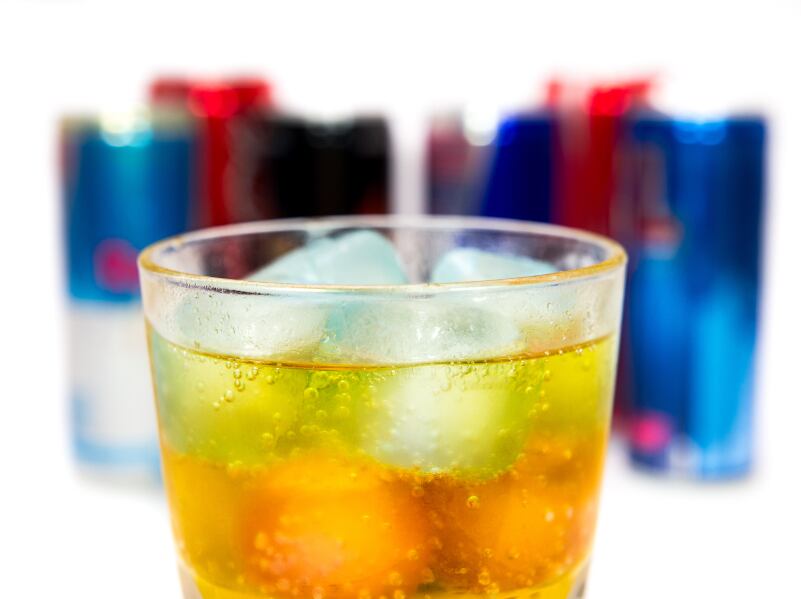“I do not in any way subscribe to the kind of idea that this is fabricated. It is clearly happening. Consumers are preferring the alternative delivery forms. I think the convergence of food and nutra in definitely happening,” said Lauren Clardy, principal of the consulting firm Nutrimarketing. “There a demographic factor with the Boomer generation. There is definite pill fatigue; along with prescription medications you are not going to get consumers to toss down 20 pills a day. And there is technical innovation. Things that were not possible 20 years ago are possible today.”
“Even the most committed supplement users have moments when they look at their daily dose and think ‘I just can’t!’ We’ve actually looked into this a lot,” said Shaheen Majeed, marketing director of Sabina Corp., which both supplies ingredients and acts as a contract manufacturer.
Functional food innovation
Examples abound of foods that have additional functional properties. Activia yogurt helped blaze the way with its probiotic-enhanced products, and Ganeden has successfully placed its spore-forming probiotic ingredient into a wide array of food products. Joint Juice is another example of a well-known food brand that is pushing an outright functional benefit.

It is beverages that lead the way toward functional foods, according to Kantha Shelke, PhD, principal in the consulting firm Corvus Blue. This is due to a variety of factors. For one thing, beverages are popular with consumers, and everyone has to drink something every day in order to maintain their fluid balance.
“Beverages have a health halo. They are easier to formulate than other food types, especially with ingredients with objectionable taste or aroma. Drinking a beverage is more convenient and less fatigue-prone than most other food types which makes compliance easier,” Shelke said.
But it’s not just about taste and convenience, Shelke said. Taste is king, but beverages as a delivery mode offer some powerful manufacturing advantages.
“The growing sophistication of beverage processing technologies and ingredient technologies have made beverages easier to produce, distribute, store, procure, and consume, all of which are key to the success of nutraceuticals. Additionally, the manipulation of viscosity, taste, flavor, pH, etc can all be manipulated to optimize the bioavailability and bioaccessibility of bioactive compounds and therefore, compliance,” she said.
Improving ingredients
Another thing driving the move of bioactives into foods is improvement in the ingredients themselves, Clardy said. Techniques that were common in the production of pharmaceuticals have slowly but surely been making their way into the realm of supplements and foods, she said.
“It is changing rapidly as pharma technologies comes into the food space. Nano encapsulation, all the beadlet technologies, that was all from pharma,” Clardy said.
The new techniques and improvement in the base ingredients themselves has made adding bioactives into food matrices both easier and less expensive, Clardy said. Fish oil is an example. It’s a problematic ingredient both from a taste and formulation perspective. But beadlet and other encapsulation technologies are making it an increasingly viable option for food fortification, she said.
“The price of ethyl esters, the most suitable form of omega-3s for food, is coming down. And the other omega-3s are improving, too; when the algal DHA first came on the market it was horrible. Now it has improved to the point that in just the last five years it is almost all infant formulas,” Clardy said.
In-between delivery modes
Both Clardy and Shelke said that there has been significant innovation in delivery modes that seem to straddle the food/supplement divide. They’re not pills, but not really food, either.
“Advances in encapsulation and flavor technologies is propelling the popularity of gummies to deliver materials with objectionable taste or aroma such as omega-3s, bitter and astringent polyphenols such as catechins and EGCG. Better flavor and sweeteners are making shots popular as compounded formulations for bitter energy ingredients, sour vitamin C, etc.,” Shelke said.
Clardy foresees liquids and gels taking a prominent place in this in-between space in the near future. New packing technologies, like flex packs, are driving the trend.
“Gels and goos really started in the sports space. But soon I think you will see a section on the supplement aisle that is full of liquids and gel products,” she said.

“Softgels, chewables, gummies – each has their own set of issues, varying from time line for delivery, to excipients that may not be suitable to some consumers. Yet also, each of these have some great potential, marketed correctly with stories and functionality, these dosage forms can bring in new customers and create longevity with existing ones,” Majeed said.
Another innovative in-between delivery mode is the Wikipearl, which is a packaging technology married to a functional food form. The product is a grape-skin like packaging around a ball of confectionary-like functional food that is about the size of a large strawberry. The pearls are formulated to provide a wide array of functional benefits and are large enough to hold the big dosage sizes required from some bioactives. The product is now in a test market stage in collaboration with Stoneyfield Yogurt in four select Whole Foods locations in the US Northeast.
“You go to the dairy case and you pick up a bone health Wikipearl and pop that into your mouth. It’s about an inch in diameter and you get your dose load of calcium, vitamin K and vitamin D. If I can get a bone health supplement that way instead of throwing down my bone health pills which are absolutely huge, I’m going to do it,” Clardy said.
“There is an art and a science to consuming nutrients and bioactives to optimize bioavailability and bioaccessibility. The different ancient medicine systems have many different preparations that can be invaluable to consumers, but taste, preparation difficulty and inconvenience have usually gotten in the way. Wikipearls and other delivery systems such as gummies and jellies are advancing the benefits of dietary supplements and other therapeutic materials,” Shelke said.
Cost side of the coin
Don’t write pills off just yet, Majeed said. Capsules or tablets are still the most cost effective way to deliver bioactives. And pill fatigue or no, he believes consumers will use them if the products show a benefit. His company concentrates on lowering dose loads to make pills smaller and more acceptable with the addition of its proprietary black pepper extract called BioPerine which boosts the bioavailability of a number of bioactives.
“The size and amounts of pills can discourage consumers from compliance. But when they experience benefits it keeps them motivated to comply. We believe the recipe for compliance is to add BioPerine so less can be used to still deliver benefits to the consumer, which is the ultimate goal. Companies who realize there may be compliance issues with customers taking their supplements may want to invest more into making their formulations more suitable to low rates of intake per day, without increasing the size of the tablet or capsule,” Majeed said.
It’s true that functional foods are a more expensive way to deliver bioactives, but Shelke believes that the commitment dietary supplement users have shown in the past can be translated to functional foods if manufacturers can deliver on the health benefit promise.
“The growing popularity of products such as Wikipearls is a clear indication that consumers are willing and able to pay for nutritious preparations that are also tasty and effective. Some functional foods such as fiber shots and probiotics should be a part of one’s daily routine, especially for those who are on the go and who travel extensively. Daily nutrition should be viewed as an investment in health and the consequences of skipping them is the real cost,” Shelke said.
